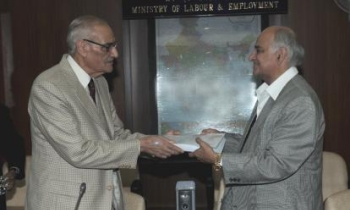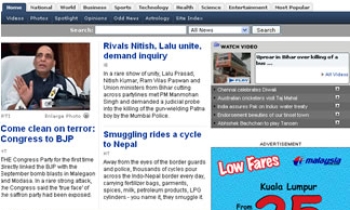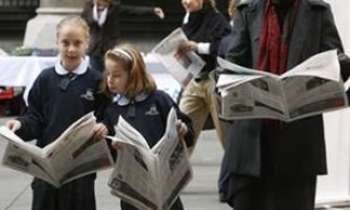Jonathan Harr, the author of A Civil Action, spent eight harrowing years plowing through a stack of legal documents as high as a three-story building, and nearly went broke in the process. Posing what he calls "the dumbest questions in the world," Richard Ben Cramer conducted more than 1,000 interviews to research What It Takes: The Way to the White House. For Random Family: Love, Drugs, Trouble, and Coming of Age in the Bronx, Adrian Nicole LeBlanc immersed herself in the love lives of drug dealers, while Ted Conover actually went to prison – as a guard – for Newjack: Guarding Sing Sing.
Dedication seems far too pallid a word for the feats of obsession chronicled in Robert S. Boynton’s The New New Journalism: Conversations with America’s Best Nonfiction Writers on Their Craft. What it takes to belong to this elite company is the ardor to burrow inside a subject, the skill to win confidences, and the stamina to persist through inevitable setbacks – as well as to transform voluminous raw material into graceful, compelling prose. These journalists all care about accuracy and fairness. But by and large, they have transcended the profession’s shibboleths about objectivity. While their style is sometimes cool and dispassionate, their sympathies are usually clear. In fact, each writer’s sensibility – Michael Lewis’s ironic worldview, Eric Schlosser’s muckraking zeal, Alex Kotlowitz’s empathy for the unfortunate – is part of what he (or, in rare instances, she) is selling.
The title of this absorbing collection is inspired, in part, by Lewis’s The New New Thing: A Silicon Valley Story (W.W. Norton, 1999), an account of Netscape’s founder Jim Clark. In his introduction, Boynton defines the "new new journalism" as "reportorially based, narrative-driven long-form nonfiction" and lauds it as representing "the continued maturation of American literary journalism." These contemporary literary journalists, he says, have wed the novelistic formal innovations of 1960s New Journalists, whose manifesto came from Tom Wolfe, with the social and political concerns of such nineteenth-century figures as Lincoln Steffens, Jacob Riis, and Stephen Crane.
Boynton, a successful journalist in his own right, doesn’t exactly stint on praise for his peers. He describes their work as "rigorously reported, psychologically astute, sociologically sophisticated, and politically aware." As director of New York University’s magazine journalism program, Boynton says, he first brought these writers into his college classes to explain their working methods. So lively were the resulting discussions that he decided to expand the interviews into a book. He admits that the interviews were vetted by his interviewees – not a practice most of them condone in their own work. But their personalities, both thoughtful and idiosyncratic, still shine through: among them, the canny, charismatic Cramer, whose technique is pure seduction; the iconoclastic, occasionally foul-mouthed Harr, who thinks nothing of lambasting a reviewer in print, and the engagingly self-deprecating Calvin Trillin, known equally for his food writing and his terse comic poetry. Asked about his background, Trillin quips: "My daughters used to say, when some telephone number had to be found or some research had to be done, Let Daddy do it – he’s practically a trained reporter.’"
Few of the nineteen writers Boynton profiles were trained in conventional ways. With the obvious exception of Cramer, a Columbia graduate, most seem to have avoided journalism schools, and several had no newspaper apprenticeships to speak of. William Langewiesche, destined to become the chronicler of the World Trade Center cleanup, was a pilot, and Jon Krakauer was a mountain climber who also worked as a carpenter and commercial fisherman. Harr was a VISTA volunteer in Appalachia and a New York City cab driver; Leon Dash taught high school history and geography in Kenya for the Peace Corps.
Many of Boynton’s "best" majored not in English, but in disciplines such as anthropology or sociology, which provided tools for cross-cultural or class-based analysis that have served them well. Conover, a summa cum laude graduate of Amherst College and later a Marshall Scholar at Cambridge University, wanted to "ride the rails" as a hobo for his senior thesis in anthropology. The college said no, but Conover pursued the idea anyway, gaining after-the-fact approval – and a book contract for Rolling Nowhere: Riding the Rails with America’s Hoboes (Viking, 1984). A passion for exploring American subcultures continues to inform his work.
All of Boynton’s subjects have written books, many of them bestsellers. (I counted, and found I had read at least seven.) Several also write regularly for a short list of elite publications, notably The New Yorker, The Atlantic, The New York Times Magazine, and Rolling Stone. (Esquire, which regularly published the New Journalists, seems to have declined in importance.) It would be great to read more of their work here, and a companion anthology would be optimal. But at least Boynton precedes each interview with a tightly written career summary, and concludes with a bibliography that will probably send readers scurrying to their local library or bookstore.
So, what else do we learn? Boynton has a standard list of questions, which varies only slightly. His concerns range from the mundane – to tape or not to tape? – to the ethical and philosophical. "Do you believe journalism can lead to truth?" is one favorite, and the answers are revealing. Ron Rosenbaum, a Phi Beta Kappa graduate of Yale University, whose books include Explaining Hitler (Random House, 1998), disparages journalism schools for insisting on third-person narration, with its illusion of omniscience. "Putting your cards on the table as the narrator – your doubts, your hesitations, your conflicting thoughts and impressions – is often more honest than third-person writing," he says, adding: "I love the way eighteenth-century novelists buttonhole the reader, grabbing his attention by badgering, charming, or insulting him."
On ethical issues, including whether to compensate interview subjects, there is no agreement – except that these issues can be hard ones. Dash, a former Washington Post reporter whose Rosa Lee: A Mother and Her Family in Urban America (Basic Books, 1996) is an intimate chronicle of poverty, says he resolutely refused to give money to his subjects, or to accept gifts from them. He was, however, willing to treat the eponymous Rosa Lee to restaurant meals and even cigarettes. Kotlowitz dealt with people in similarly desperate straits in There are No Children Here: The Story of Two Boys Growing Up in the Other America (Nan A. Talese/Doubleday, 1991). But once he finished the book, he not only set up a trust fund for the boys, but helped them gain admission to private schools. Whatever the time lag, he violated journalism’s equivalent of Star Trek’s Prime Directive – by daring to intervene in, and improve, the lives he touched.
Ethics, it turns out, inevitably intersects with craft, including such workaday decisions as how to record information. Some writers swear by tape for its accuracy. Others take prodigious notes instead because they fear that tape recorders can intimidate (and they abhor transcription). Then there is the technique of the Pulitzer Prize-winning Cramer, whose disingenuousness seems remarkable – and remarkably effective. But let him tell it: "When I go in to interview someone, I don’t prepare any questions. And not only do I have no questions, I don’t have a notebook – and if I have a notebook, I don’t take it out of my pocket." After a while, he says, if a source says something particularly good, he’ll ask permission to write it down: "I tell them why it is such a good quote, and exactly what it means to me and the book . . . . Then I put the notebook away. And this drives them crazy. They’ll spend the next six hours trying to make me take my notebook out again!"
One is tempted to add: Don’t try this at home.
Because Boynton is focused on craft, he tells us relatively little about the business of freelancing. But the stories of LeBlanc, Harr, and others, however sketchy, make clear that practicing this kind of time-intensive reporting, even with a book contract, can lead to penury or worse. For every few who succeed, one imagines the talented many who do not, and must rededicate themselves to carpentry or cab driving or perhaps a newspaper job.
Which brings us to one final, important matter: Why is it that just three of the nineteen writers in this book – LeBlanc, Susan Orlean, and Jane Kramer – are women? It can be argued that Boynton’s choices merely reflect the predominance of male voices in the prestigious U.S. magazines that publish both narrative and opinion journalism. The New Yorker has recently been criticized for this tendency. The New Republic, The Washington Monthly, and The American Prospect have long been led and dominated by men. And the much-praised Atlantic is no exception. Excluding poetry, the January/February issue has thirty-two bylines by men, including the prolific Langewiesche, and just five by women, a ratio that is typical for the magazine.
But why? Is the culprit rank sexism? Male editors hiring their male buddies? Or else the magazine’s preference for subjects such as war and politics that draw more male writers? Do women writers, facing rejection, discourage more easily? (I’ve heard that thesis proposed.) Or, as devoted mothers and daughters and wives, are they simply unavailable to devote the months and years of zealous, almost superhuman effort required by immersion journalism? There is surely no single, and no easy, answer. But it would have been nice if Boynton, in this otherwise probing book, had thought to raise the question.









